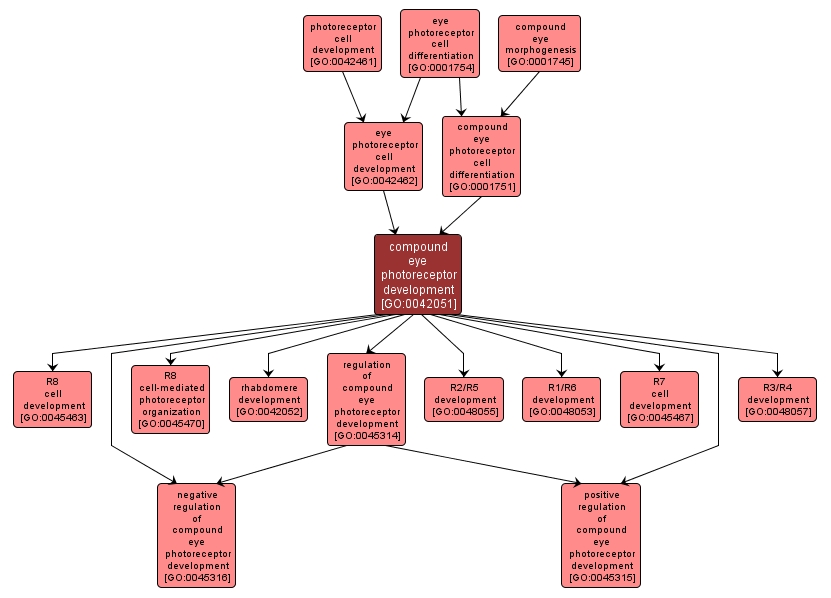GO TERM SUMMARY
|
| Name: |
compound eye photoreceptor development |
| Acc: |
GO:0042051 |
| Aspect: |
Biological Process |
| Desc: |
The process whose specific outcome is the progression of a light-responsive receptor in the compound eye over time, from its formation to the mature structure. |
Synonyms:
- adult eye photoreceptor development
|
|

|
INTERACTIVE GO GRAPH
|














